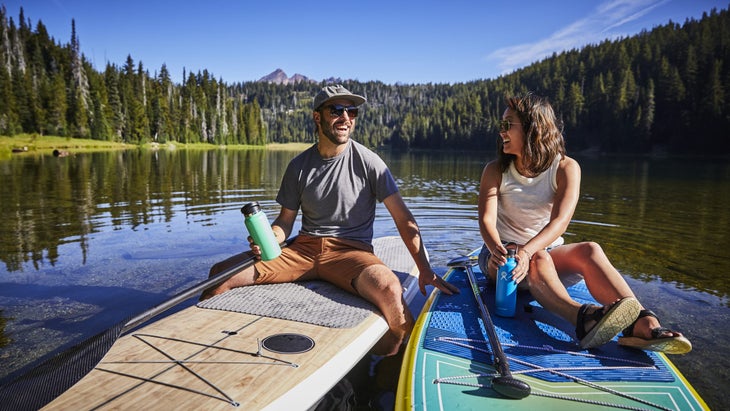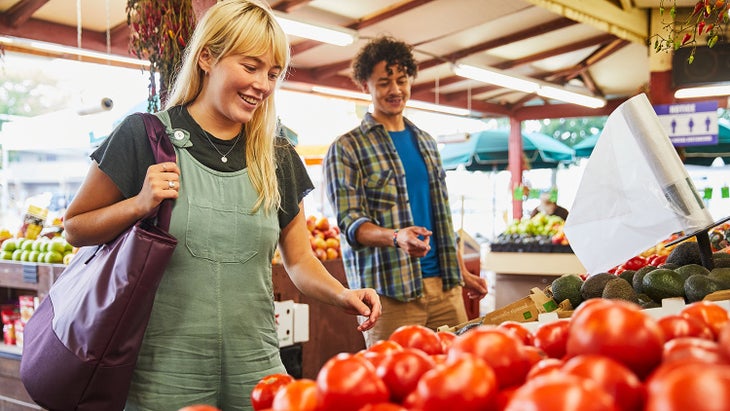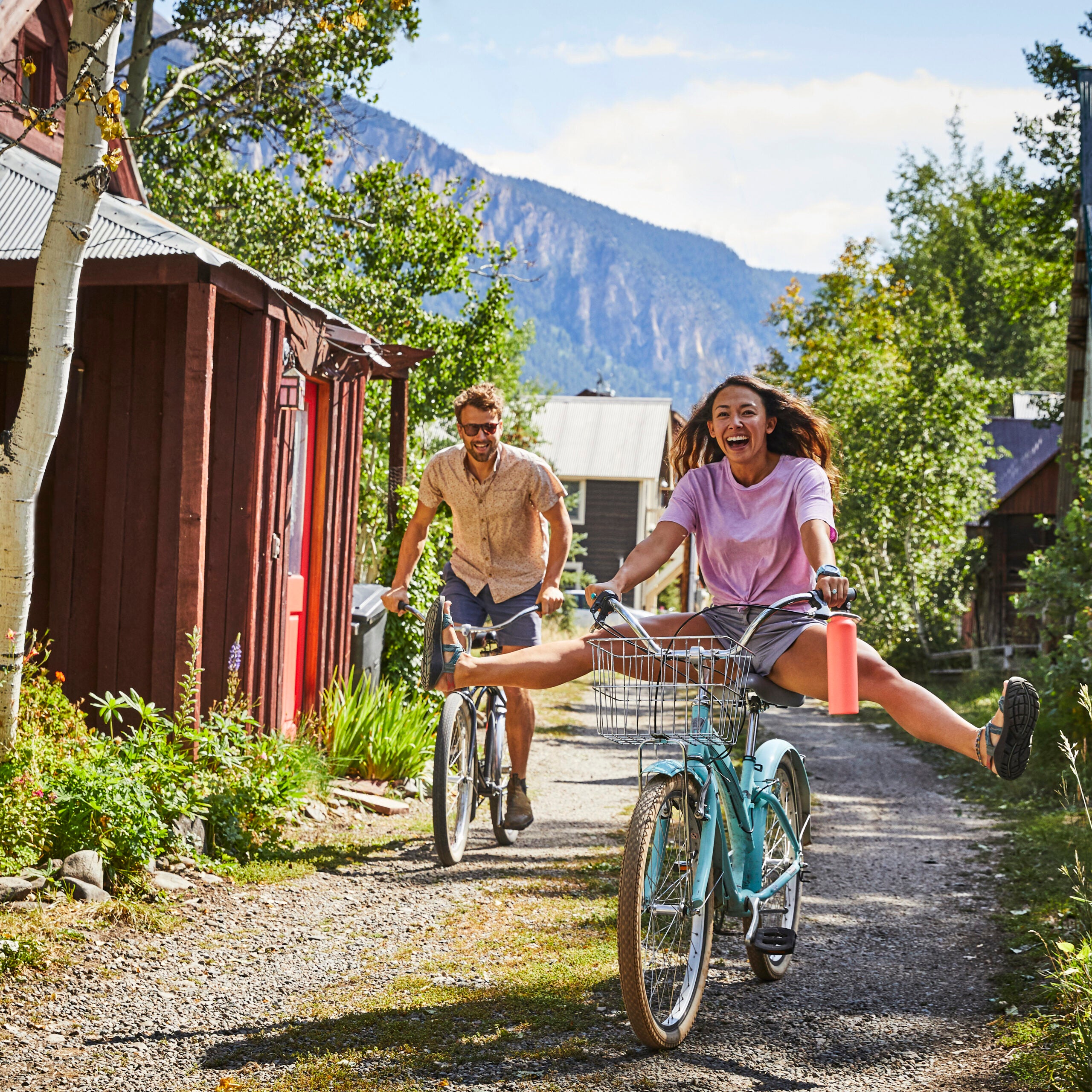Somewhere along the way, the path to wellness got overly complicated (and expensive!)—$8 green smoothies, weekly meal subscriptions, high-tech workout equipment. While there’s nothing wrong with those things, achieving real, functional well-being can be a simpler and more attainable process than you might think. To that end, we tapped three ambassadors and wellness experts—fitness entrepreneurs and , and mountain athlete —for their best advice on how we can all better approach wellness.
Everything in Moderation
Heard this one before? There’s a reason: it works. “This applies to everything from food to exercise to alcohol,” says Sojitra, the first adaptive athlete for Hydro Flask. Give a tired body a day off from exercise or an extra hour of sleep. In terms of food, diet culture often centers around what you can’t have. Approaching eating with a mindset of moderation is more about giving your body what it wants and needs without overdoing it. For Sojitra, sweets and alcohol aren’t off-limits, but they’re not a free-for-all either.

Drink Plenty of Water
Again, duh. But how much water do you actually drink each day—and is it enough? According to the U.S. National Academies of Sciences, Engineering, and Medicine, men and women should take in at least 3.9 liters and 2.7 liters a day, respectively. That’s a lot of water. An easy way to keep track of your progress: figure out how many of your favorite water bottles it takes to hit your target number and fill them each morning. “We’re not seen without our . We carry them around everywhere we go,” says Jay Rose, co-founder of Phase SiX, a fitness and empowerment platform that offers programming on everything from athletics and nutrition to self-awareness and ecology.
Get ���ϳԹ��� and Move Your Body
“Do something every day that makes you feel good,” says Sojitra. There’s no right here. Maybe that means eating lunch in the sun or taking 15 minutes to read a book. The Roses always make time for a walk in the park each day. While many good free meditation apps exist, Sojitra finds movement meditative and gets outside daily to go backcountry skiing, skateboarding, or trail running. Being out in nature has been scientifically proven to aid in our well-being––some physicians actually prescribe it to patients. “Humans didn’t evolve to sit in boxes and stare at computers all day,” says Sojitra. This meditation through movement, or “flow state,” means all of his focus and energy are directed toward the task at hand, which helps him stay present and grounded.

Eat Whole Foods (With Company)
“You don’t need to add fancy powders or anything,” says Steph Rose, co-founder of Phase SiX, who has a degree in nutritional therapy. “You can’t lose if you just eat whole foods like avocado, brown rice, sweet potatoes, and broccoli.” Don’t forget to think about how you eat, too. Are you often eating in front of the TV or while working? Try to think about mealtime as an opportunity to slow down. “One thing I try to do is not eat alone,” says Sojitra, which is something that’s much more common in the U.S. than in India, where he’s from. “Being in community and being around friends is really important.”
The larger sizes of the and aren’t really designed for solo use, says Sojitra—so they can help make eating with others easier. And even if you eat alone, the Insulated Lunch Boxes can at least get you outside at mealtime. The Roses like to snack on healthy stuff all day long, so filling up an Insulated Tote or a for smaller snacks makes it easier to have food on hand and not be tempted to buy something on the go (this helps reduce waste, too).
Practice Gratitude
“We wake up every morning and do visualization and write a gratitude list as part of our routine,” says Steph. “Gratitude changes your whole mindset. It really sets the tone for the day ahead.” Try this by writing a list of things that you’re grateful for each morning right when you wake up.
Rest and Recover
“Everyone’s told to work as much as they can, and training hard six or seven days a week is a badge of honor when in fact you should be focused a lot more on recovery,” says Jay. “We should be focusing just as intensely on recovery as we focus on our workout.” And recovery doesn’t mean a light session at the gym––your body will perform better when it gets the time it needs to repair itself. Jay and Steph do hard workouts twice a week and take two full days off in between, which gives them time for hobbies and hanging out with friends and family.
Since 2009, has designed gear that happily goes where you do and stays the perfect temp til the outdoor adventure is over. Today is wide open. And we’re up for anything. #HeyLetsgo

